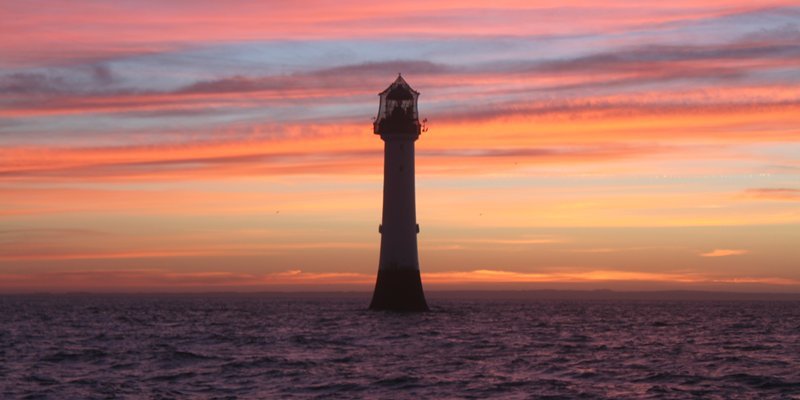The Bell Rock Lighthouse has been described as “proof that man could tame nature” by author Bella Bathurst, who has been leading the 200th anniversary celebrations in Edinburgh.
Bella gave a public talk at the Hub, at Castlehill, in the capital to mark the bicentenary, 200 years after the first beam of light shone from the top of the lighthouse constructed by Robert Stevenson and his highly skilled team.
The attempt to build a lighthouse on a reef 11 miles off the coast was one of the heroic engineering feats of the day.
The construction was several times delayed due to bad weather and the fact that workmen could only work on it when the tide was low.
Stevenson’s work on the Bell Rock and elsewhere provided a fund of anecdotes of the danger in which he placed himself.
“He really relished being out with the men, working and contributing to this enormous endeavour,” Bella said.
“He wasn’t ignoring his sense of responsibility but I think he felt a great sense of exhilaration.
“The fact that he had managed to fight an impossible rock, and thereby to save countless lives, was extraordinary.
“It was proof that man could tame nature, which was a very fashionable idea at the time.
“It was proof that the Scots were better than the English. It was proof that Scotland led the world in marine engineering.
“If you said we want to build a lighthouse in the middle of the North Sea on an impossible reef, which is covered at high tide, it was possible to do it, which is an extrordinary achievement.
“I think he felt very strongly that this was going to be the thing that would absolutely put his stamp on engineering and in order for him to be able to put his stamp on the rock, he needed to make himself indispensible.”Impressive engineering achievementBella’s book, The Lighthouse Stevensons, won The Somerset Maugham Award and was shortlisted for the Guardian First Book Award.
Bella went on to write another book, The Wreckers (2005), a history of shipwrecking and skulduggery around the coast of Britain.
Born in London, Bella’s mother is from Biggar in South Lanarkshire, so she has always had a family connection with Scotland.
She studied at Durham University and was first employed in publishing, before working in Edinburgh as a journalist in her 20s.
Bella was drawn to the Stevensons after paying a visit to The Science Museum in London, where she saw a beautiful, revolving Victorian lighthouse lens.
As part of a BBC documentary on the Stevenson family, she was taken out to the Bell Rock, off the Arbroath coast, by a Northern Lighthouse Board helicopter to be interviewed about her fascination with the generations of famous engineers.
A year of celebrations has been lined up in Arbroath to mark the bicentenary of the world’s oldest surviving sea-washed lighthouse.
They include a memorial service to those who perished on the Bell Rock.
Working on the Bell Rock was only possible between the months of April and October because the winter months were so stormy.
Robert Stevenson drew up the plans for the tower’s design. After only four years, the tower was completed and it became operational on February 1, 1811.
Northern Lighthouse Board chief executive Roger Lockwood said, “Two hundred years on, the Bell Rock lighthouse remains an impressive engineering achievement.
“I am sure that Robert Stevenson would be pleased to know that, in its modern automated form, the light is still successfully providing the service to mariners he originally envisaged.
“Technologies may have developed but the Bell Rock reef remains a real off-shore hazard for shipping traffic on the east coast of Scotland and we will need to continue to mark it well into the future.”
